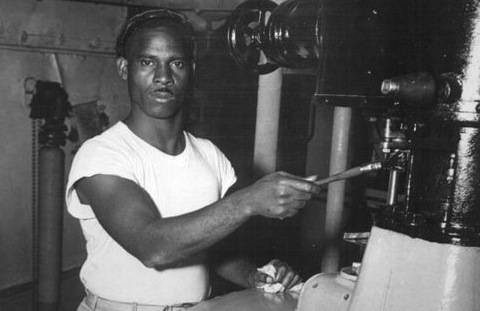The white T-shirt, once a humble undergarment, has transformed into a timeless wardrobe staple that transcends cultures, classes, styles, and identities. From its early origins as a protective layer to its current status as a highly collectible fashion item, the white T-shirt has become a blank canvas for self-expression and a catalyst for important conversations about labor practices and environmental sustainability in the fashion industry.
Throughout history, the white T-shirt has been associated with iconic figures from Bruce Springsteen and James Dean to Madonna and Kurt Cobain. Its simplicity allows for self-invention and embodies the essence of the American dream, as it offers a foundation upon which individuals can project their identities. The white T-shirt’s ability to adapt and resonate across diverse communities underscores its status as a unisex wardrobe essential.

However, the ubiquity of the white T-shirt also brings to light pressing issues within the fashion industry. The mass production of garments, including cotton T-shirts, contributes significantly to environmental pollution. The fashion industry is often cited as one of the most polluting industries globally, following closely behind the oil industry. Moreover, concerns about fair labor practices arise due to the exploitative nature of global manufacturing processes. As consumers, we are increasingly urged to consider the impact of our clothing consumption on the world around us.

Filmmaker Martin de Thurah’s thought-provoking video installation featuring a young woman discarding multiple white T-shirts highlights the disposable nature of fashion and prompts viewers to reflect on their relationship with clothing. Displayed in MoMA’s exhibition, “Items: Is Fashion Modern?,” the film serves as a gentle reminder to ponder our consumption habits and the layers of history embedded within each white T-shirt.
Delving into the origins of the white T-shirt, we find that it emerged from undergarments worn throughout history. Initially, these under layers served to protect the skin from coarser outer garments and maintain cleanliness. Over time, the advent of dress and sanitary reform led to more frequent laundering of undergarments, shaping modern laundering practices. The Industrial Revolution, coupled with colonial and protectionist trade, facilitated the mass production of cotton products, including the white T-shirt, often with the involvement of slave labor.

In the early twentieth century, companies such as Cooper’s, Hanes, and Fruit of the Loom introduced the two-piece union suit, dividing it into long johns and an undershirt. These undershirts, known as T-shirts, gained popularity among the US military and were subsequently marketed to the general public as comfortable and easy to maintain garments. They symbolised masculinity and strength, while also serving as homoerotic signifiers of the male physique.
The white T-shirt’s rebellious potential became evident as teenagers began customising it to express their individuality, whether through surface modifications or ensemble combinations. Marlon Brando’s portrayal of Stanley Kowalski in “A Streetcar Named Desire” solidified the white T-shirt’s mainstream appeal, emphasising its crisp outline against his muscular arms.
As fashion evolved, the white T-shirt embraced its status as a blank canvas for personalised branding and self-expression. Karl Lagerfeld’s pairing of Chanel’s tweed cardigan jackets with white T-shirts exemplified the juxtaposition of high fashion and simplicity. In contemporary times, the white T-shirt remains a cornerstone of fashion, encompassing genres like hip-hop and normcore, where pristine ensembles often feature box-fresh tees. Designer Mary Ping’s White T-shirt Project explores the diverse possibilities and materialities of this iconic garment, inviting us to reconsider its significance.
In the twenty-first century, the white T-shirt has become emblematic of ethical and ecological concerns in the fashion industry. Brands like American Apparel, Pact, and Patagonia have recognised the importance of responsible practices and have centered their identities around producing white T-shirts with a focus on sustainability and benefiting all stakeholders. These companies strive to address the ethical implications of manufacturing and distribution, working towards a more conscious and transparent fashion industry.

The white T-shirt embodies both the apex and the rejection of Walter Benjamin’s notion of the mass-produced object. On one hand, its infinite reproducibility makes it accessible and affordable for all, allowing it to be a ubiquitous presence in our wardrobes. On the other hand, the memories and associations woven into our favourite white T-shirts prevent us from viewing them as disposable items. Each white T-shirt carries personal significance and becomes a part of our identity, challenging the notion of the mass-produced as disposable.
The evolution of the white T-shirt illustrates the ever-changing dynamics between fashion, society, and the environment. It serves as a symbol of modernity, adaptability, and self-expression, while also shedding light on the social and ecological issues entangled within the fashion industry. As consumers, we have the power to shape the future of fashion by supporting brands that prioritise ethical practices and sustainable production.
The white T-shirt’s journey from undergarment to fashion staple is remarkable in its enduring relevance and cultural significance. It has the power to bridge gaps between generations and transcend social boundaries. Its blank canvas invites us to express ourselves and explore the possibilities of personal style. However, it also calls upon us to reflect on our consumption habits, consider the environmental impact of the fashion industry, and advocate for fair labor practices.
/https://tf-cmsv2-smithsonianmag-media.s3.amazonaws.com/filer/9c/e4/9ce42b17-c80d-41f1-b2c5-7ff6ab18c37e/t-shirts.jpg)
In a world where fashion trends come and go, the white T-shirt remains an enduring symbol of simplicity, versatility, and the potential for positive change. It continues to evolve alongside societal shifts, reflecting the values and aspirations of each era. The white T-shirt’s surprising history serves as a reminder of the complex interplay between fashion, culture, and our individual and collective responsibilities. As we navigate the future, let us embrace the white T-shirt not only as a fashion statement but also as a catalyst for progress and a symbol of our capacity to shape a more sustainable and inclusive world.

Iftikar Ahmed is a New Delhi-based art writer & researcher.





